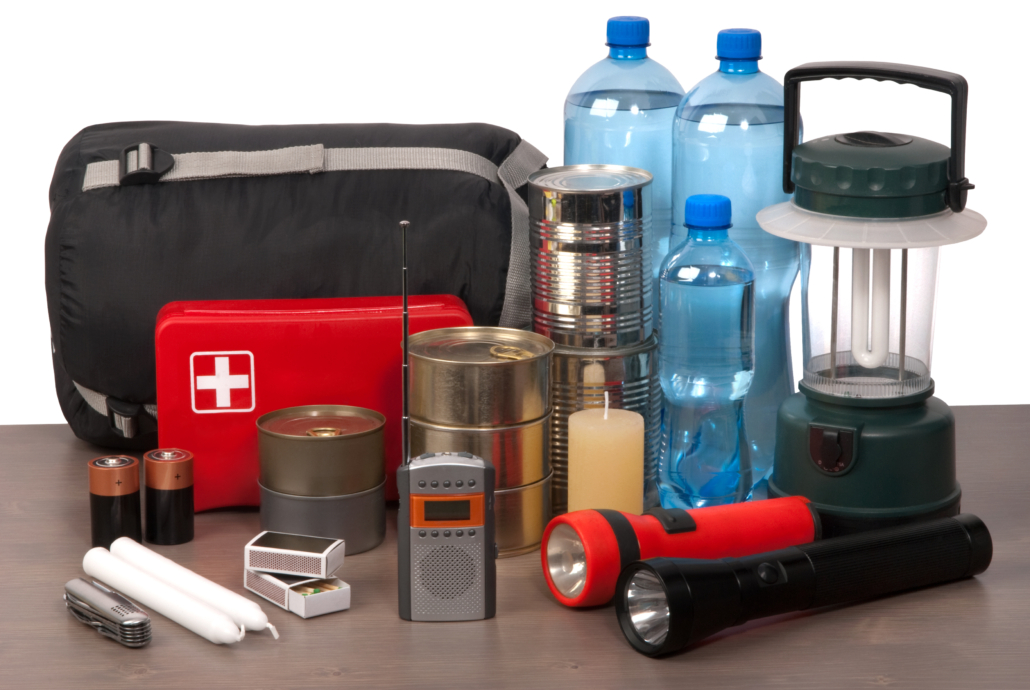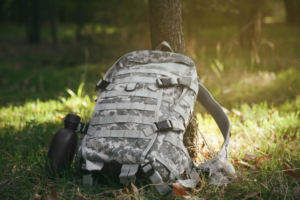The Ultimate Bug Out Bag Checklist
Throughout our lives, we make many precautions that we hope will never be needed. Vehicle insurance, rainy day funds, and healthcare screenings are just some examples. Packing a bug out bag should take equal priority.
If you are going to make the effort to pack a bugout bag, though, it’s imperative that you include everything you could ever need. This simple guide will reveal all.
What Is A Bug Out Bag?
A bug out bag, also known as a BOB or go-bag, is a portable emergency kit that is designed to help you survive the first 72 hours following an emergency or the need to complete an evacuation. The name derives from the bail out bags used by the U.S, military. Bug out bags and tactical backpacks should be kept at home, ready for immediate use should a natural disaster strike. If you are traveling for an outdoor adventure, it’s worth keeping one in your RV too.
BOBs form an essential part of the post-disaster response, thus enabling you to overcome the problems and get back to normality far sooner.
What To Include In Your Go Bag
When building your bug out bag checklist, the first step is to ensure that the tactical backpack itself is up to the task. This 30L survival bag should work well for people living in most American locations, although larger products are available. The best solution will be lightweight yet rugged, compact but equipped with enough compartments to satisfy your needs.
Finding the right survival backpack to use as your bugout bag is one thing, but adding the right items is another challenge altogether. Focus on the following factors and you won’t go far wrong.
First Aid Kits
An emergency situation that requires an evacuation is quite serious. As such, you can expect to encounter scenarios where first aid may be required, either immediately or over the course of the next 72 hours.
Safety must come first. With this in mind, it’s imperative that you prioritize the relevant features. You must include the following;
- A full first aid kit and wound treatment kit,
- Antibacterial gels and face masks.
- Toilet paper or wet wipes,
- All prescription medications,
- Spare eyeglasses or contact lenses,
- Sunscreen and protection.
The first aid kit itself should include bandage scissors, as well as any sanitary products that may be required if any member of the household is on their cycle.
Food & Drink
After confirming that everyone is safe, your next major concern will stem from hydration and nutrition. Trying to survive 72 hours without the right food and drink will prove to be very difficult, particularly when combined with extreme circumstances.
Preparing for every eventuality is crucial and should be considered for your bug out bag checklist. While the exact foods you pack may be influenced by personal tastes, this checklist will serve you well;
- Canned goods to see you through the next 72 hours, hot or cold.
- Portable water filtration bottle and filtration tablets.
- Individual water bottles for each person.
- Army knife for opening cans and other items.
- Portable stove and fuel,
- Waterproof ziplock bags.
Food and drink will take up a significant amount of space, which is why you must ensure that you have the tools and storage to make it last longer. Successful rationing is vital.
Adequate Shelter
When you are unable to get inside your home or other properties due to a natural disaster or emergency, warmth and shelter are crucial. Aside from protection and comfort, it’s the only way to ensure other possessions are protected.
Several items should be added to your bug out bag checklist, although some can be carried separately in their self-contained luggage. Your shelter should include;
- A tent and tarpaulin.
- Sleeping bags and blankets.
- A change of clothes,
- Waterproof ponchos.
- Sturdy hiking boots,
- Fleeced clothes designed for warmth,
Given that you may need to set up camp in tough conditions, hard knuckle tactical gloves are advised. This can prevent minor injuries and major discomfort.
Communication Items
Whether it’s right away or at some stage in the next 72 hours, you will need to communicate with others. This could mean connecting with friends and family, or officials in the local area. Either way, you need the tools to facilitate those interactions.
Your bugout backpack is the place to store the items that you won’t naturally have on you at the very moment an emergency surfaces. Some of the most crucial items are;
- A portable power bank fast charger and spare lithium-Ion batteries for other devices.
- A LED tactical flashlights, glow sticks, and headlamp.
- A compass or computerized navigation tool.
- Whistle
- Flag or something that can be waved to get attention.
- Walkie-talkies.
Naturally, carrying your cellphone will be another crucial step to ensure that you are ready to call for help as soon as it’s available.
Miscellaneous Items
The above features should help you survive the 72 hours. However, you need to think beyond survival. It may be necessary to prove your identity while you also cannot afford to lose valuables. Carrying them in your bug out bag is the only solution.
There are various items that can fall into this category. Some of the key items you’ll be determined to pack are;
- Passports, driving licenses, and ID cards.
- Medical and insurance records.
- Bank info, house deeds, and financial matters.
- Safety pins, duct tape, and other simple accessories.
- Some family photos.
- A printed contact list in case your cell is lost.
An emergency will show you what’s important in life. When your bug out bag has those items packed, the 72 hours will be a little less stressful. Crucially you can get help sooner.
The Final Word
A bugout backpack is one of the items that you will hopefully never need to use. If you do, however, you’ll be grateful that you took the time to prepare it in style. Not only that, but it’ll additionally provide protection to your entire family in the most difficult situations imaginable. If that doesn’t inspire you to take this matter seriously, perhaps nothing will.
To find out more about packing your bug out bag to make your household members feel disaster-proof, contact our experts today.






